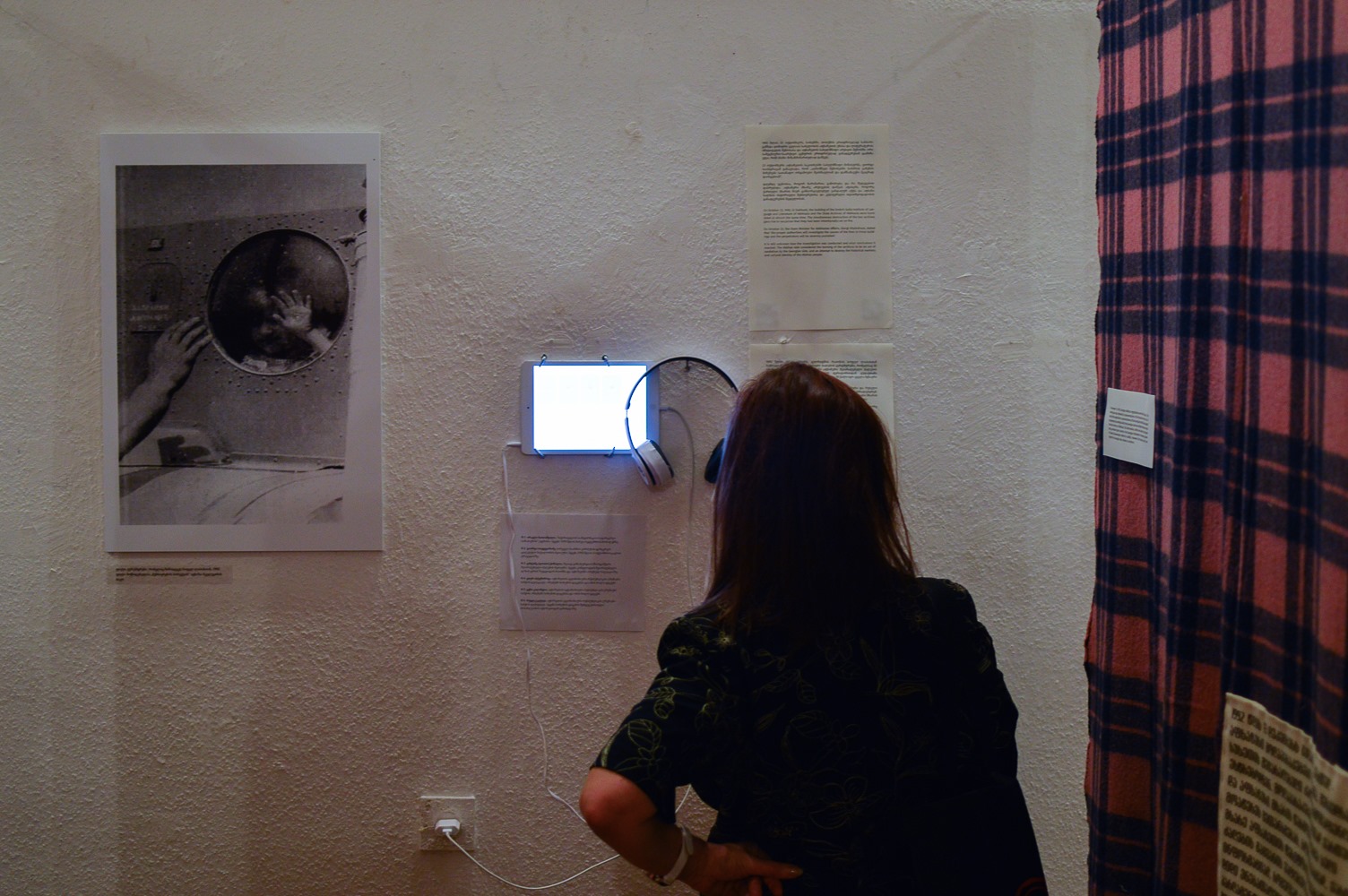In the corridors of the Abkhaz conflict – exhibition of ‘collective memory archive’ opens in Tbilisi
One of the most dramatic periods in Georgia’s modern history has been presented at a new exhibition of original historical material in Tbilisi. The Corridors of Conflict: Abkhazia 1989 – 1995, will be held from October 4 at the State Museum of Literature until 29 October.
“In the conflict affected contexts, Switzerland is working in the framework of its global peace policy, we see that time is running too fast, memory is fading, and it is very difficult to collect material. We therefore support very much efforts to deal with the past of conflicts and building up archives of different nature”, – said Patric Franzen, Ambassador of Switzerland to Georgia, speaking at the opening event.
• Photo archive: Georgian families leaving Abkhazia during the 1992-1993 Georgian-Abkhaz war
• Op-ed: the Georgian-Abkhaz dead-end
About the ‘collective memory archive’
Five years ago, Georgian and Abkhaz research teams, with the support of the international organisations Conciliation Resources and swisspeace, began to collect eye-witness accounts and a wide range of original print, photo and video materials related to the Georgian-Abkhaz conflict in two parallel archives.
There are already several thousand items that have been collected and catalogued in the archive to date, including documents, newspapers and photographs.
The organisers say that the exhibition ‘The Corridors of Conflict. Abkhazia 1989-1995’ is the first attempt to publicly speak about this ‘archive of collective memory.’
Alex Cole, Deputy Ambassador of the UK to Georgia, emphasized the importance of “understanding the views and perspectives of others, their version of history.”
“It doesn’t mean you have to share those perspectives or views”, said Alex Cole.
The events of 1989-1995
In 1989 – 1995, several events took place which defined Georgian history for decades to come – the Soviet Union collapse, Georgia became an independent state. In 1991 the Georgian-Ossetian conflict broke out. Georgia was thrown into civil war, and the Georgian-Abkhaz armed conflict followed, which took the lives of tens of thousands of people on both sides of the conflict.
This was accompanied by an acute energy crisis, poverty, corruption and political instability.
The Georgian-Abkhaz conflict of 1992-1993 was central to the period.
The focus of the exhibition
The exhibition is spread out in several halls and talks about the history of the period up to the armed conflict (1989-1992), the war years (1992-1993) and the post-war period of 1993-1995.

Of particular importance are video and audio interviews with people that were direct participants in or witnesses of these events. Some of them are politicians, others fighters, who made decisions in both Sukhum/i and Tbilisi, in addition to residents of the region who were in the direct zone of conflict.

Over the three weeks of the exhibition, regular discussions and events will be held which the public are encouraged to participate in.
Exhibition organisers invite visitors who have their own stories or documents connected to the Georgian-Abkhaz conflict to share them and help in the creation of the archive.
Representatives of the research groups have informed journalists that work on the archive continues. It’s aim is to present as unbiased as possible the events of those years.
The organisers of the exhibition are: GoGroupMedia, CIPDD, Studio RE, Conciliation Resources, swisspeace.
Details about and information on the exhibition can be found on the channel’s two social media accounts:
Facebook (Georgian): The Corridors of Conflict. Abkhazia, 1989-1995
Twitter (English): @Memory__Project

__________________________________
The exhibition is funded by the Swiss Federal Department of Foreign Affairs with additional financial support from the UK Government Conflict, Stability and Security Fund (CSSF).
The financial support from the Swiss Federal Department of Foreign Affairs, the European Union, the Conflict, Stability and Security Fund of Great Britain and the Sigrid Rausing Trust also allowed the creation and development of collective memory archives, which are the basis for the exhibition.



















